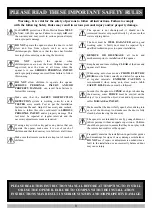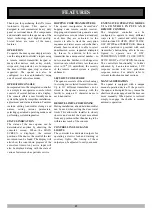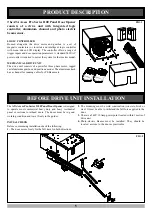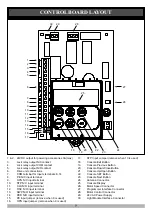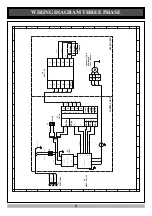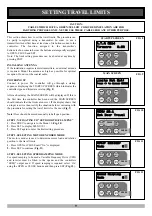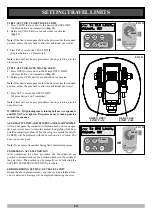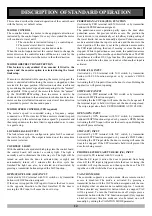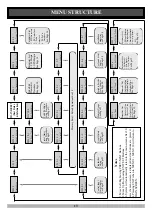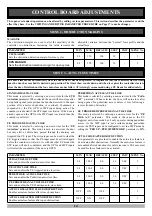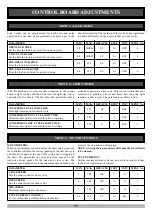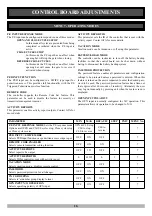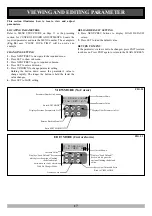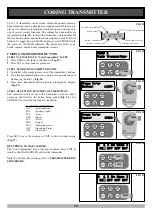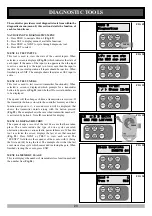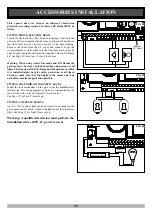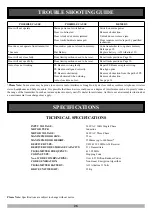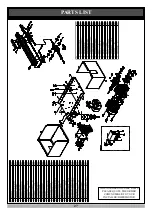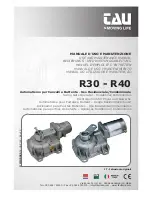
12
This section describes the standard operation of the control board
with the factory set default values.
MOTOR CONTROL
.
The controller drives the motor in the appropriate direction as
instructed by the control inputs. Once a cycle is started the motor
will continue to travel until:
1.The controller is instructed to stop by a control input.
2.The motor's travel limit is reached.
3.A motor is obstructed, overloaded or stalls
When the control inputs instruct the control board to change the
motor direction, the controller turns off the motor, waits for the
motor to stop and then starts the motor in the other direction.
MOTOR OBSTRUCTION DETECTION
This feature is only enabled if an encoder if fitted to the
opener and the encoder option is selected during the travel
limit setup.
If a motor is obstructed while opening, the motor is stopped. If a
motor is obstructed while closing, the motor is stopped and then
reversed to the open position. Obstruction detection is achieved
by monitoring the motor's speed and comparing it to the “normal”
speed profile. If the speed of the motor falls below the “normal”
by the MARGIN RPM setting, then the motor is said to be
obstructed. In addition to the normal motor obstruction detection,
motor overload, stall detection and excessive travel time detection
is provided to protect the door and opener.
MOTOR SPEED CONTROL (VFD required)
The motor's speed is controlled using a frequency output
connected to a VFD or inverter. When a motor is started its speed
is ramped up to the selected open/close speed % parameter and
then ramped down as the travel limit is approached so as to come
to a gentle stop.
LOCK RELEASE OUTPUT
The lock release output is configured to pulse for 0.5 seconds at
the start of each cycle. The output is turned on at the same time
the motor is started.
COURTESY LIGHT
With the addition of a module which plugs into the control board,
the control board will control a courtesy light. The light is
normally used to illuminate the driveway etc. The light will be
turned on each time the door is activated (day or night) and
automatically turned off 1 minute after the drive cycle has
finished.The light can also be activated and deactivated by
pressing a transmitter button assigned the LGT function.
OPEN/STOP/CLOSE (OSC) INPUT
(Activated by OSC terminal with N/O switch or by transmitter
button with OSC function assigned)
If the door is stopped the OSC input will cause the door to move
in the opposite direction to that last travelled. If the door is
moving the OSC input will cause the door to stop.
PEDESTRIAN ACCESS (PED) FUNCTION
(Activated by PED terminal with N/O switch or by transmitter
button with PED Function assigned).
The pedestrian access operation partly opens the door allow
pedestrian access but prevent vehicle access. The position the
door is driven to is automatically set to halfway during setting of
the travel limits, but can be manually adjusted. Pedestrian access
mode is entered when the input is activated and the door is in the
closed position. If the door is not in the pedestrian access mode,
the PED input will stop the door, if moving, or close the door, if
stopped. While in pedestrian access mode, the pedestrian access
position temporally becomes the open limit for the door. The PED
input then acts with an OSC type function. The pedestrian access
mode is exited when the door is closed or when another input is
activated.
CLOSE (CLS) INPUT
(Activated by CLS terminal with N/O switch, by transmitter
button with CLS function assigned or by console’s CLOSE
button).
Activating the CLS input will cause the door to close. Holding the
input active will prevent opening.
SWIPE (SWP) INPUT
(Activated by SWP terminal with N/O switch or by transmitter
button with SWP function assigned).
Activating the the SWP input will cause the door to be opened. If
the terminal input is held it will prevent the door being closed.
The swipe input also effects P.E TRIGGERED AUTO CLOSE.
OPEN (OPN) INPUT
(Activated by OPN terminal with N/C switch, by transmitter
button with OPN function assigned or by console’s OPEN button)
Activating the OPN input will cause the door to open. Holding the
input will prevent closing.
STOP (STP) INPUT
(Activated by STP terminal with N/C switch, by transmitter
button with STP function assigned or by console’s EXIT button)
Activating the STP input while the door is moving will cause the
door to be stopped. If the STP terminal is held it will prevent the
door from being moved.
PHOTOELECTRIC SAFETY BEAM (P.E) INPUT
(Activated by PE terminal with N/C switch)
When the P.E input is active, the door is prevented from being
closed. If the P.E input is triggered while the door is closing, the
controller will stop the motors and then open the door. The P.E
input has no effect while the door is opening.
VACATION MODE
The controller supports a vacation mode where remote control
access is disabled. The mode is activated by pressing a
transmitter button with the VAC function assigned until the con-
sole displays that vacation mode is enabled (approx. 5 seconds).
When activated any transmitter button which is assigned VAC
will be ignored. To turn the Vacation mode off simple press a
transmitter button with the VAC function assigned (Only requires
a brief activation.) Vacation mode can also be turned on or off
manually by editing the VACATION MODE parameter.
DESCRIPTION OF STANDARD OPERATION



